From the diminutive Rusty-spotted cat in Sri Lanka to the imposing Siberian tiger of Russia’s Far East, the world is home to a captivating array of 41 wild cat species. Each species, belonging to the Felidae family, boasts a unique beauty and plays a crucial role in its respective ecosystem. While iconic big cats like lions, tigers, and leopards are widely recognized, a vast diversity of smaller, lesser-known felines also inhabit our planet. Are you a devoted cat enthusiast, or simply intrigued by these fascinating creatures? Delve into the world of wild cats and discover the incredible breadth of this animal family.
Driven by a lifelong passion for wildlife, I embarked on a personal journey to observe every wild cat species in their natural habitats. This ambitious endeavor, likely spanning decades, has so far allowed me to encounter 21 distinct species. Some of these elusive felines are so rare that sightings are infrequent, making each encounter a truly special experience. For those inspired to witness these magnificent animals firsthand, I’ll share valuable insights into prime locations and guided tours that can increase your chances of observing wild cats in their element.
For up-to-date information on recent wildlife sightings, including wild cats, mammalwatching.com serves as an invaluable resource. This platform allows wildlife observers worldwide to exchange trip reports, making it an essential tool for anyone seeking to track down a particular wild cat species.
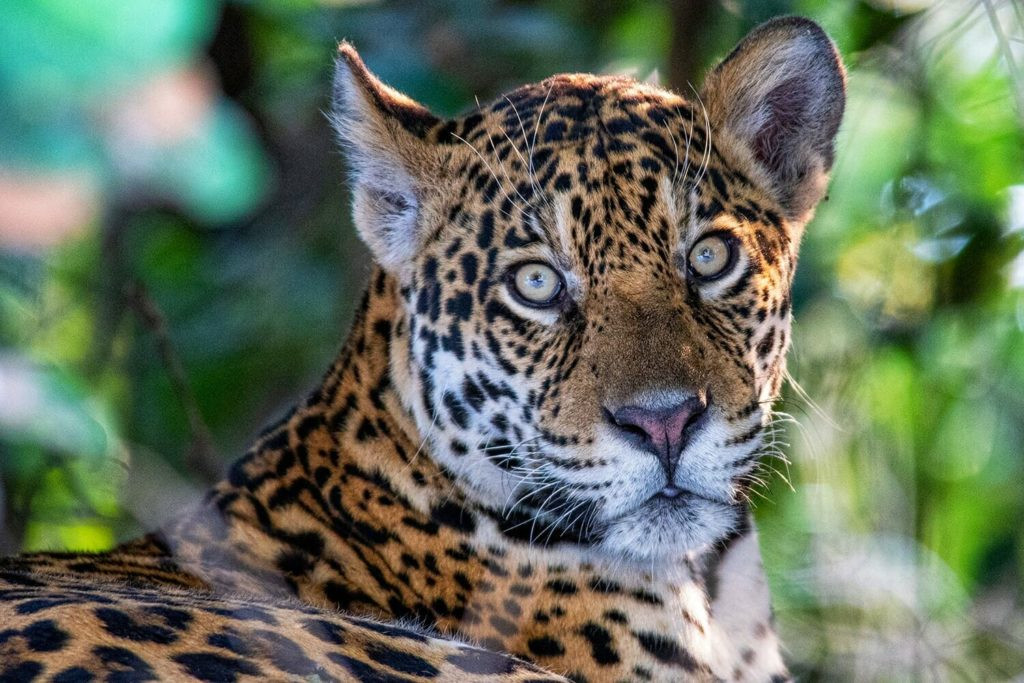 Jaguar resting on a riverbank in Brazil. Alt text: Jaguar lounging on Cuiaba River bank, Pantanal, Brazil, showcasing wild cat river habitat
Jaguar resting on a riverbank in Brazil. Alt text: Jaguar lounging on Cuiaba River bank, Pantanal, Brazil, showcasing wild cat river habitat
Wild Cat Classification: How Many Species Are There?
The precise number of recognized wild cat species is subject to ongoing scientific discussion. However, the Felidae family is broadly categorized into eight distinct lineages. The Cat Specialist Group, a part of the International Union for Conservation of Nature (IUCN), officially recognizes 41 species within the Felidae family as of November 2017, including domestic cats within this count.
The Felidae family is further divided into two subfamilies: Pantherinae and Felinae. Pantherinae encompasses the seven “big cats,” renowned for their size and power. Felinae includes the remaining 33 “small cat” species, showcasing a remarkable range of adaptations and ecological roles.
The Majestic Seven: Exploring the Big Cat Species
The seven big cats, classified under the Pantherinae subfamily, are celebrated for their imposing size and charismatic presence. These apex predators hold significant ecological importance and cultural fascination across the globe. The big cat species are:
- Lion
- Tiger
- Jaguar
- Leopard
- Snow Leopard
- Clouded Leopard
- Sunda Clouded Leopard
Endangered Wild Cats: Species on the Brink
Sadly, numerous wild cat species face severe threats to their survival. The IUCN Red List of Threatened Species highlights five felids classified as Endangered, requiring urgent conservation attention:
- Tiger
- Iberian Lynx
- Borneo Bay Cat
- Fishing Cat
- Flat-headed Cat
Here’s a comprehensive breakdown of wild cat classification, listing all 40 wild cat species excluding domestic cats, organized by lineage:
Big Cat Species – Panthera Lineage: Giants of the Cat World
Big cats, members of the Panthera lineage, are not only among the most charismatic animals globally but also include some of the most critically endangered. These magnificent creatures are vital to ecosystem health and inspire awe and wonder.
Tiger (Panthera tigris): The Striking Striped Apex Predator
Siberian tiger IUCN Status: Endangered
The Siberian tiger, the largest cat species, can reach a weight of up to 320 kg. Tragically, this magnificent animal is also the most endangered among big cats. Historically, tigers roamed regions as far west as Turkey and the Indonesian islands of Bali and Java; however, these three subspecies are now extinct. The South China tiger is nearing extinction, with estimations suggesting only about 20 individuals remain in the wild. The other five tiger subspecies are experiencing varying degrees of population decline.
The Siberian tiger population once dwindled to a mere 40 individuals in the 1940s. However, dedicated conservation efforts in the Russian Far East have successfully brought this apex predator back from the brink.
Currently, the majority of wild tigers belong to the Bengal subspecies, primarily inhabiting the Indian subcontinent. India offers the best opportunities for observing tigers in their natural habitat. Renowned Indian national parks for tiger sightings include Kanha and Bandhavgarh, located in Madhya Pradesh state.
During a visit to Kanha National Park, I was fortunate to witness 15 tigers over seven days, including solitary individuals, a mating pair, and a tigress with her three cubs.
Lion (Panthera leo): The King of the Savannah
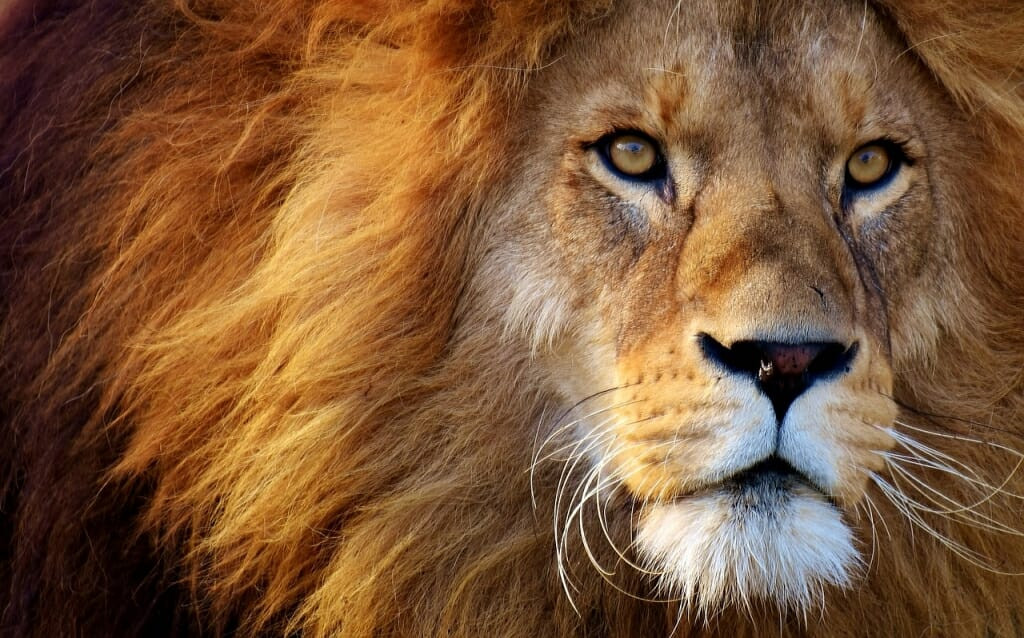 Majestic African lion portrait. Alt text: African lion in golden light, Kruger National Park, South Africa, iconic big catAfrican lion IUCN Status: Vulnerable
Majestic African lion portrait. Alt text: African lion in golden light, Kruger National Park, South Africa, iconic big catAfrican lion IUCN Status: Vulnerable
The lion, the second-largest cat species, once inhabited vast regions of Africa, Europe, and Asia. Today, lion populations are fragmented and largely confined to Sub-Saharan Africa, with a critically endangered population persisting in India. The Barbary lion, formerly found in Egypt, Morocco, and Algeria, is now extinct.
Historically, lions were categorized into African and Asiatic types. Recent genetic research indicates that Asiatic lions are a subspecies of the Northern lion, which also includes the critically endangered West African and Central African lion subspecies. Southern and East African lions constitute the second subspecies.
Southern and East African lions are commonly observed on classic African safaris. Gir National Park in Gujarat, India, is the sole habitat of the Asiatic lion.
My lion sightings include experiences in Kruger National Park and adjacent sanctuaries. A particularly memorable encounter was observing a pride of rare white lions in Timbavati. Kgalagadi Transfrontier Park in South Africa and Etosha National Park in Namibia are also prime locations for lion viewing.
Leopard (Panthera pardus): The Adaptable and Widespread Cat
African leopard IUCN Status: Vulnerable
The leopard exhibits remarkable adaptability, holding the widest distribution among big cats. Its range extends across sub-Saharan Africa, Central Asia, the Indian subcontinent, and Southeast Asia. While some leopard subspecies are severely endangered, the species was initially considered relatively secure. However, it’s now understood that leopards have lost 75% of their historical range, and populations continue to decline.
Africa and Sri Lanka are leopard strongholds. In Africa, Maasai Mara National Park (Kenya), Kruger National Park (South Africa), Serengeti (Tanzania), and numerous other parks in southern and eastern Africa offer excellent leopard sighting opportunities.
For wildlife enthusiasts in Sri Lanka, consider visiting Wilpattu National Park as an alternative to the often overcrowded Yala National Park. For a more adventurous experience, Bohai tours in the Russian Far East offer expeditions to track the critically endangered Amur leopard, the rarest big cat subspecies. Amur leopard numbers are slowly recovering, increasing from approximately 35 individuals in the 1980s to over 100 in 2017.
Further Reading: Jaguar vs Leopard: Spotting the Difference.
Jaguar (Panthera onca): The Powerful Swimmer of the Americas
 Jaguar resting on a riverbank in Brazil. Alt text: Jaguar lounging on Cuiaba River bank, Pantanal, Brazil, showcasing wild cat river habitatJaguar in the Pantanal. Image by The Wildlife DiariesIUCN Status: Near Threatened
Jaguar resting on a riverbank in Brazil. Alt text: Jaguar lounging on Cuiaba River bank, Pantanal, Brazil, showcasing wild cat river habitatJaguar in the Pantanal. Image by The Wildlife DiariesIUCN Status: Near Threatened
The jaguar stands out as the most aquatic of the big cats, demonstrating exceptional swimming skills and frequently resting on tree branches overhanging rivers. It also possesses the strongest bite force relative to body size among big cats, capable of crushing an adult caiman’s skull, its primary prey in the Pantanal.
Jaguars are unique among big cats as they represent a single, continuous population across their vast 6-million sq km range, spanning 18 countries, with no recognized subspecies. This characteristic presents unique conservation challenges. Instead of focusing on isolated populations, conservation efforts now prioritize protecting habitat corridors that enable jaguar movement and maintain genetic diversity across populations.
In 2018, the United Nations Development Programme launched the Jaguar 2030 program to safeguard jaguars throughout their entire geographic range.
The Amazon and Pantanal regions of Brazil are jaguar strongholds. However, the Pantanal, particularly around Porto Jofre on the Cuiaba River, offers superior jaguar viewing opportunities. When planning a Pantanal tour for jaguar sightings, ensure your base is in Porto Jofre.
Further Reading: Jaguar Spotting in the Pantanal
Snow Leopard (Panthera uncia): The Elusive Ghost of the Mountains
Snow leopard IUCN Status: Vulnerable
The snow leopard, often called the “Ghost of the Mountains,” is the most enigmatic big cat. A Nepali saying emphasizes its elusiveness, stating it’s harder to see a snow leopard than to see God. These cats inhabit some of Earth’s most challenging environments – the high-altitude mountain ranges of Central Asia – with each individual requiring vast territories.
Due to its wide distribution, the IUCN downgraded the snow leopard from Endangered to Vulnerable in 2017. However, the Snow Leopard Trust disputed this decision, citing insufficient scientific data. Current estimates suggest 3,920 to 6,390 snow leopards remain in the wild.
Despite their elusiveness, snow leopards are regularly sighted in Hemis National Park in India. However, this pursuit demands resilience, involving camping in -20°C temperatures and prolonged scanning of mountain valleys. The snow leopard’s grey fur with black blotches provides exceptional camouflage, making it blend seamlessly into its rocky environment.
Clouded Leopard (Neofelis nebulosa): The Arboreal Acrobat
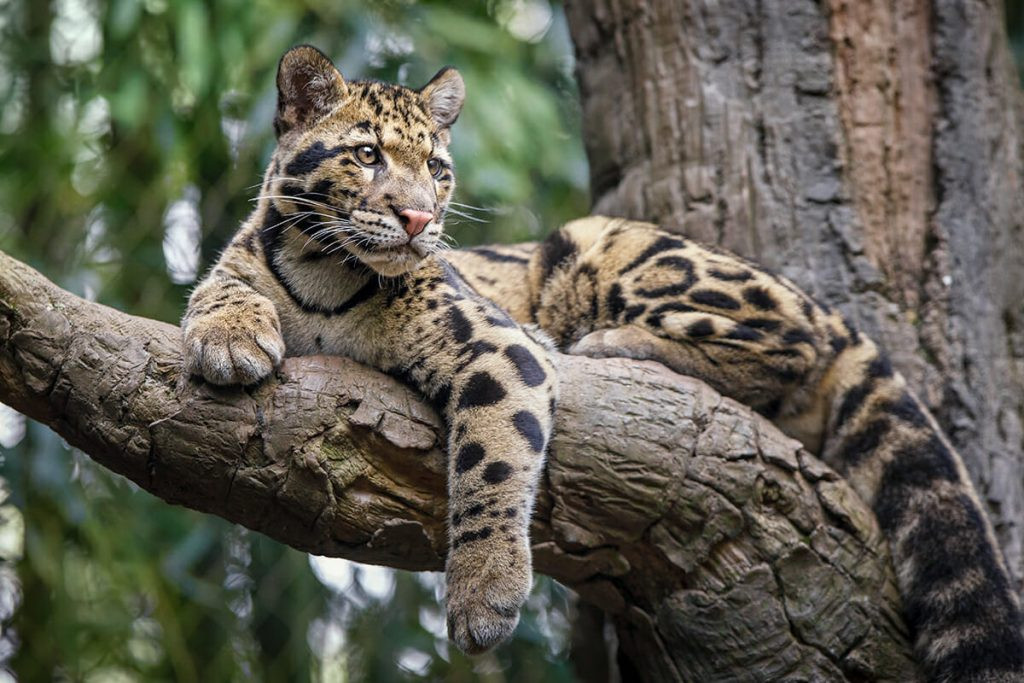 Clouded leopard in Bhutan. Alt text: Clouded leopard portrait, Bhutan wildlife, arboreal cat speciesClouded leopardIUCN Status: Vulnerable
Clouded leopard in Bhutan. Alt text: Clouded leopard portrait, Bhutan wildlife, arboreal cat speciesClouded leopardIUCN Status: Vulnerable
The clouded leopard, the smallest big cat, is also the most acrobatic. Renowned for its climbing prowess, it possesses flexible ankle joints, enabling head-first descent from trees, hanging from branches by hind feet and tail, and even inverted climbing on horizontal branches.
Beyond climbing, clouded leopards are unique among big cats for their ability to purr and for having the longest canine teeth relative to body size, sometimes referred to as “modern-day sabre-tooths.”
Clouded leopards are threatened, with a decreasing population estimated at fewer than 10,000 mature individuals. Their secretive nature has limited research, and their populations may be smaller than current estimates.
While ranging from the Himalayan foothills to Southeast Asia, clouded leopards are exceptionally difficult to spot in the wild. Occasional sightings occur on wildlife safaris in India.
Sunda Clouded Leopard (Neofelis diardi): The Island Specialist
Sunda Clouded Leopard. Image @ Mike Gordon – Adventure Alternative Borneo / Wildlife of AsiaIUCN Status: Vulnerable
Until 2016, the clouded leopard was considered a single species. Genetic analysis revealed that clouded leopards on Borneo and Sumatra are distinct species, diverging from mainland counterparts about 1.5 million years ago.
Sunda clouded leopards, endemic to these islands, are slightly smaller and darker than mainland clouded leopards. Until recently, sightings were equally rare for both species.
Deramakot Forest Reserve in Sabah, Borneo, has gained recognition as a prime location for spotting Sunda clouded leopards. While sightings are not guaranteed, Deramakot offers the best chance to observe these elusive felines.
Small Cat Species: Unveiling the Diversity of Smaller Felids
While big cats often capture the spotlight, the majority of wild cats are small cat species. They inhabit every continent except Antarctica and Australia (although Australia has a significant feral cat population descended from domestic cats introduced by European settlers).
Bay Cat or Pardofelis Lineage: Asian Enigmas
The Bay cat lineage, the second to diverge, includes three Southeast Asian species, some of the rarest Asian wild cats.
Borneo Bay Cat (Catopuma badia): The Bornean Mystery
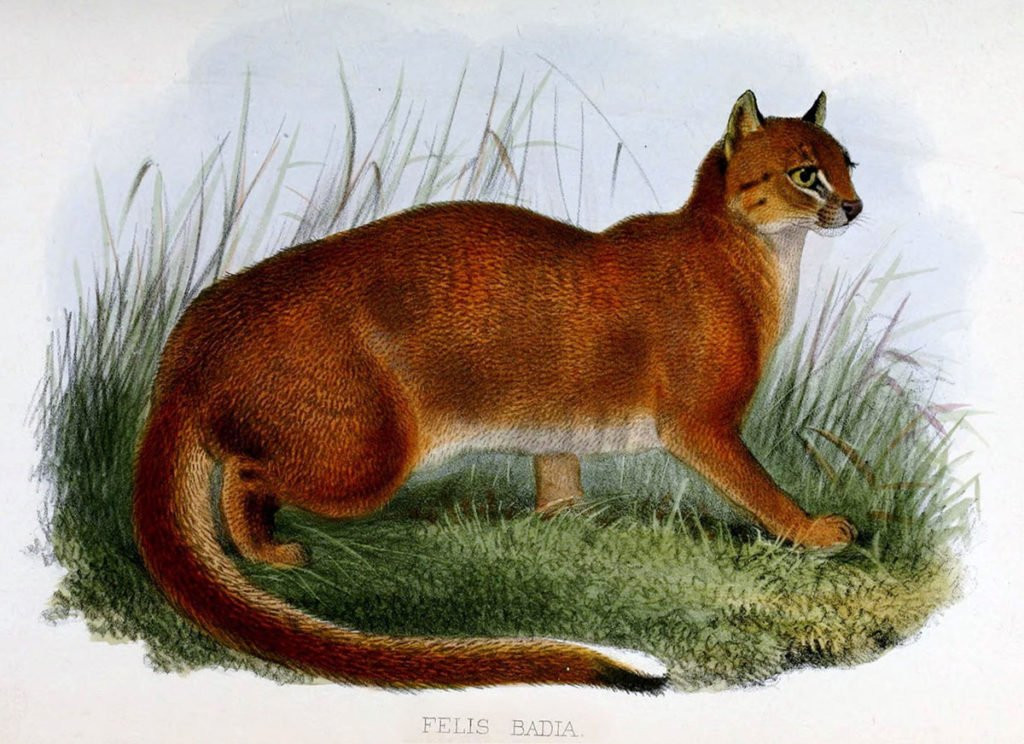 Bay cat. Image @ Jim Sanderson via Wikipedia Creative CommonsIUCN Status: Endangered
Bay cat. Image @ Jim Sanderson via Wikipedia Creative CommonsIUCN Status: Endangered
The endangered Borneo Bay cat is a true enigma, endemic to Borneo and shrouded in mystery since its 1874 discovery. Extremely secretive, bay cats are rarely observed in the wild, and much about their biology remains unknown.
Unlike clouded leopards, marbled cats, and leopard cats also found in Borneo, bay cats appear to avoid forest trails, hindering camera trapping efforts and making sightings exceptionally rare and unpredictable.
Asiatic Golden Cat (Catopuma temminckii): The Elusive Forest Dweller
Juvenile Asiatic golden cat. Image @ Tambako The Jaguar – via Flikr Creative CommonsIUCN Status: Near Threatened
Another rarely seen species, the Asiatic golden cat, has a patchy distribution from India to Malaysia, including Sumatra, but absent from other Indonesian islands.
Asiatic golden cats favor forested habitats, primarily active during dawn, dusk, and daylight hours. While skilled climbers, they spend most time on the ground, capable of taking down prey much larger than themselves, like young water buffalo calves.
Currently, reliable sighting locations are lacking, but accidental encounters have occurred in Indonesia.
Marbled Cat (Pardofelis marmorata): The Arboreal Beauty
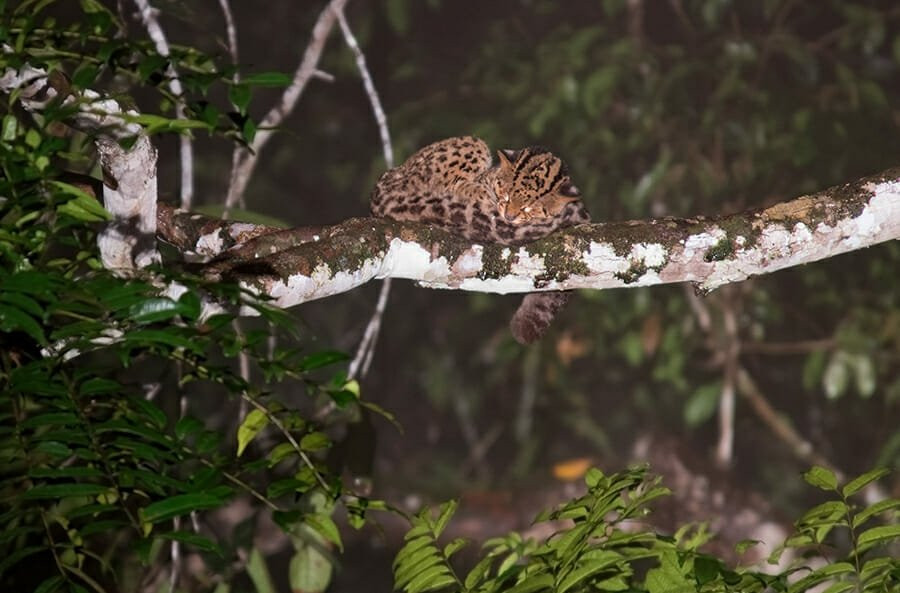 Marbled cat in Deramakot Forest Reserve, Borneo. Alt text: Marbled cat perched on a branch, Deramakot Forest, Borneo, exquisite coat patternMarbled cat in Deramakot Forest Reserve (Image by The Wildlife Diaries)
Marbled cat in Deramakot Forest Reserve, Borneo. Alt text: Marbled cat perched on a branch, Deramakot Forest, Borneo, exquisite coat patternMarbled cat in Deramakot Forest Reserve (Image by The Wildlife Diaries)
IUCN Status: Near Threatened
The marbled cat, with its striking coat pattern and exceptionally long tail, is among the most beautiful small cats. Its range extends from the Himalayan foothills to Malaysia and the islands of Sumatra and Borneo. Highly arboreal, marbled cats likely spend most of their lives in trees.
I have observed Marbled cats on multiple trips to Deramakot Forest Reserve in Borneo. On one occasion, we saw two individuals in the same tree, possibly an adult and a young kitten.
Caracal Lineage: African and Asian Mid-Sized Cats
The Caracal lineage, the third oldest, includes three medium-sized species, primarily found in Africa.
Serval (Leptailurus serval): The Long-Legged Hunter of the Grasslands
Serval IUCN Status: Least Concern
The serval is a distinctive cat with long legs, large ears, and a short tail – adaptations for hunting in tall grasslands. Widespread in Southern Africa, servals are rarer in the continent’s north. These remarkable felines can leap up to 3.6 meters vertically to capture prey, even with closed eyes.
Servals are abundant in the Ngorongoro Conservation Area in Tanzania. Surprisingly, Secunda, South Africa, home to the world’s largest coal liquefaction plant, also hosts a high serval density, possibly due to abundant prey like vlei rats and the absence of larger carnivores.
African Golden Cat (Caracal aurata): The Rainforest Phantom
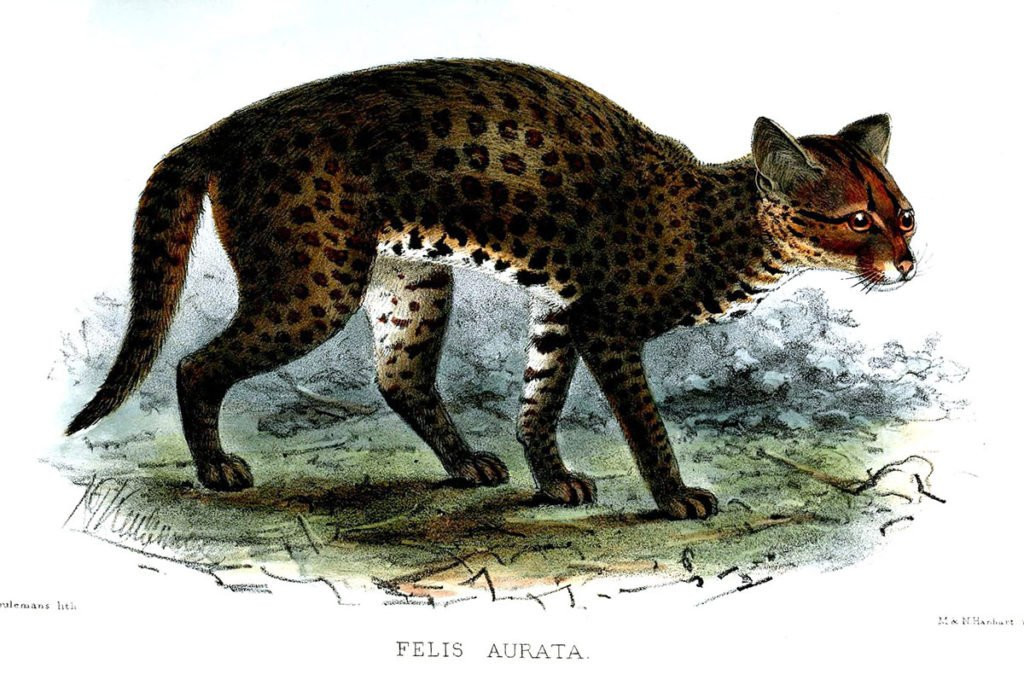 African golden cat. Image @ By John Gerrard Keulemans via Wikipedia Creative CommonsIUCN Status: Vulnerable
African golden cat. Image @ By John Gerrard Keulemans via Wikipedia Creative CommonsIUCN Status: Vulnerable
One of the rarest wild cat species and the rarest wild cat in Africa, the African golden cat inhabits the rainforests of West and Central Africa. Its preference for dense tropical forests makes it exceptionally difficult to observe.
Sightings have been reported in the Libongo Forest Concession in Cameroon, where they appear relatively common along access roads.
Caracal (Caracal caracal): The Black-Eared Acrobat
Caracal
IUCN Status: Least concern
The caracal is unique in the Caracal lineage for its distribution extending beyond Africa to the Middle East, Central Asia, and India. Its name, derived from Turkish, means “black ears,” referring to its distinctive black-tufted ears. Another acrobatic feline, the caracal can leap 3 meters into the air, catching multiple birds in a single bound.
While secretive, caracals are often seen in South African parks and reserves (Kgalagadi NP, West Coast NP, Mosaic Farms). I was fortunate to spot a caracal family in Ranthambhore National Park in India, where they are rarely sighted.
Ocelot or Leopardus Lineage: Latin American Radiance
The Ocelot lineage is the most diverse, containing eight small spotted cats, all native to Latin America. Uniquely, these cats possess 36 chromosomes, unlike the 38 chromosomes of other lineages.
Ocelot (Leopardus pardalis): The Spotted Hunter of the Americas
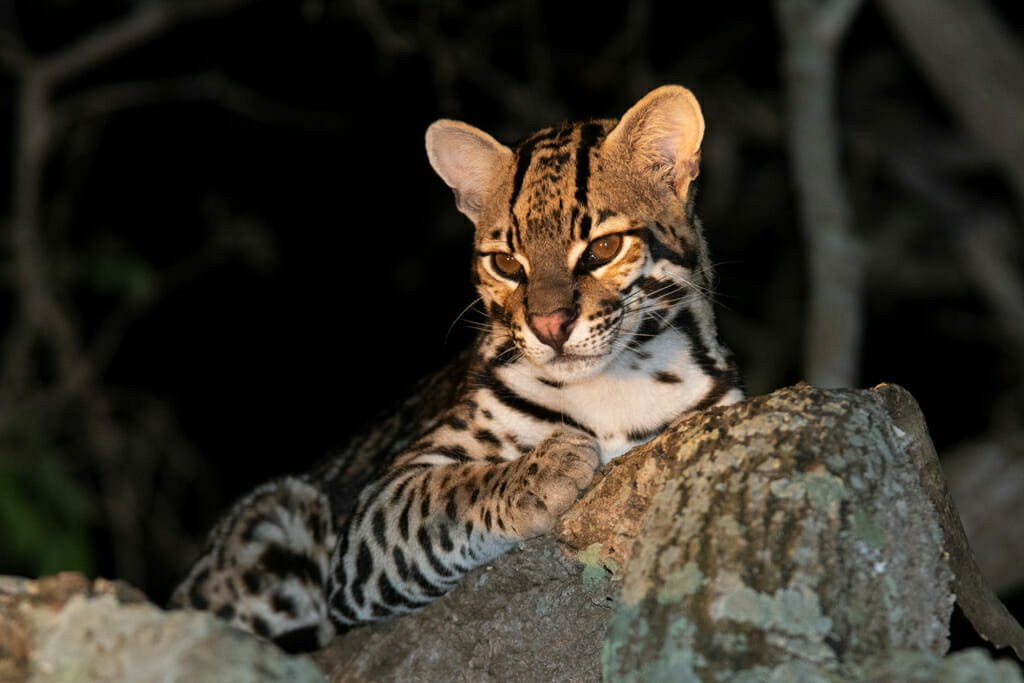 Ocelot in Pantanal, Brazil. Alt text: Female ocelot in Pantanal, Brazil, spotted coat, nocturnal hunterFemale Ocelot in the Brazilian Pantanal, Fazenda San Francisco (Image by The Wildlife Diaries)
Ocelot in Pantanal, Brazil. Alt text: Female ocelot in Pantanal, Brazil, spotted coat, nocturnal hunterFemale Ocelot in the Brazilian Pantanal, Fazenda San Francisco (Image by The Wildlife Diaries)
IUCN Status: Least Concern
The ocelot ranges from South America through Central America, Mexico, and into Southern Texas. It is likely the most commonly observed South American wild cat.
Barro Colorado Island in Panama boasts the highest ocelot population globally. The Transpantaneira highway in Brazil’s northern Pantanal is also a good location for spotting these spotted hunters.
However, the San Francisco Farm in the southern Pantanal is considered the best place for ocelot sightings. I observed three ocelots on a single night drive, all at close range and exhibiting relaxed behavior.
Margay (Leopardus wiedii): The Tree-Dwelling Mimic
Margay IUCN Status: Near Threatened
Resembling a smaller ocelot, the margay is a superior climber, spending most of its life in trees. It’s one of only three wild cat species with flexible ankle joints allowing head-first tree descent (along with clouded and marbled cats).
Margays can hunt entirely in trees and have been observed mimicking baby pied tamarin alarm calls to ambush them.
Arboreal habits make margays harder to spot than ground-dwelling cats. Wildsumaco Lodge in Ecuador is reportedly a good place to look for Margays.
Colocolo (Leopardus colocolo): The Pampas Ghost
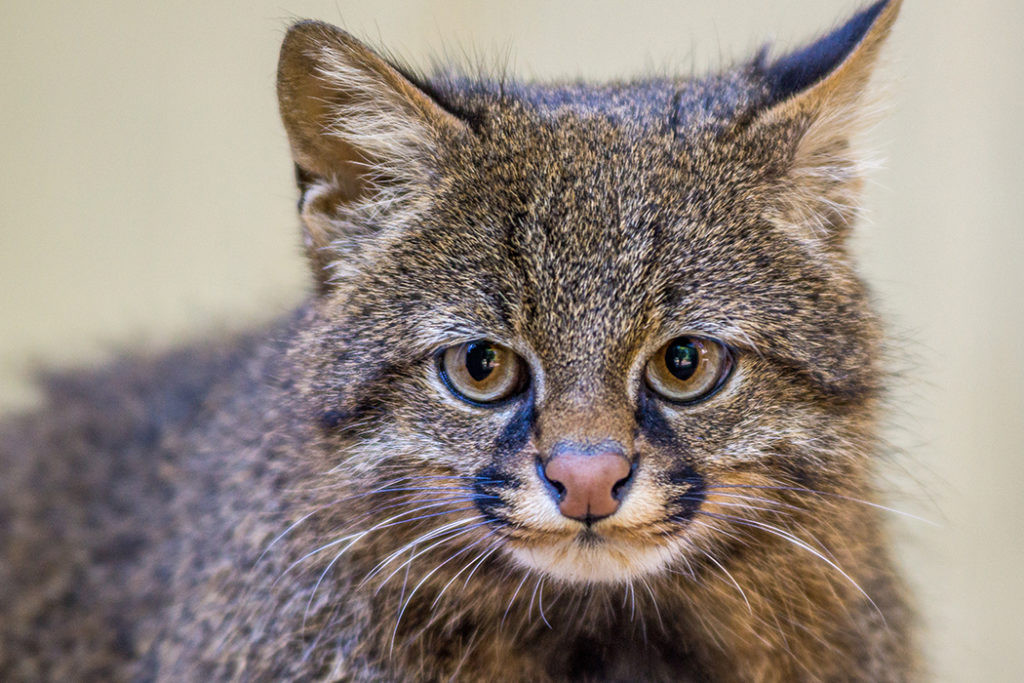 Colocolo cat in grasslands. Alt text: Colocolo or Pampas cat, grassland habitat, South American wild catColocolo IUCN Status: Near Threatened
Colocolo cat in grasslands. Alt text: Colocolo or Pampas cat, grassland habitat, South American wild catColocolo IUCN Status: Near Threatened
The colocolo encompasses small wild cats previously classified as three separate species: colocolo (L. colocolo), Pantanal cat (L. braccatus), and Pampas cat (L. pajeros). Recent taxonomic revisions by the Cat Specialist Group recognize colocolo or Pampas cat as a single species ranging across much of Argentina and Uruguay, extending into Bolivia, Paraguay, Brazil, and Ecuador.
I missed colocolo at Fazenda San Francisco in the Southern Pantanal, Brazil, where they are seen about weekly.
Northern Oncilla (Leopardus tigrinus): The Tiny Spotted Cat
Oncilla IUCN Status: Vulnerable
The oncilla, similar to ocelots and margays but smaller, was recently divided into Northern and Southern Oncilla species. Northern oncillas inhabit Central America, Venezuela, Guyana, and northeastern Brazil.
Ecuador, particularly Bellavista Lodge and Cabanas San Isidro Lodge, is a prime location for oncilla sightings. They are also occasionally seen in the Brazilian Pantanal.
Southern Oncilla (Leopardus guttulus): A Close Relative
IUCN Status: Vulnerable
The Southern oncilla is found in central and southern Brazil, Uruguay, Paraguay, and northern Argentina.
Guina (Leopardus guigna): South America’s Smallest Feline
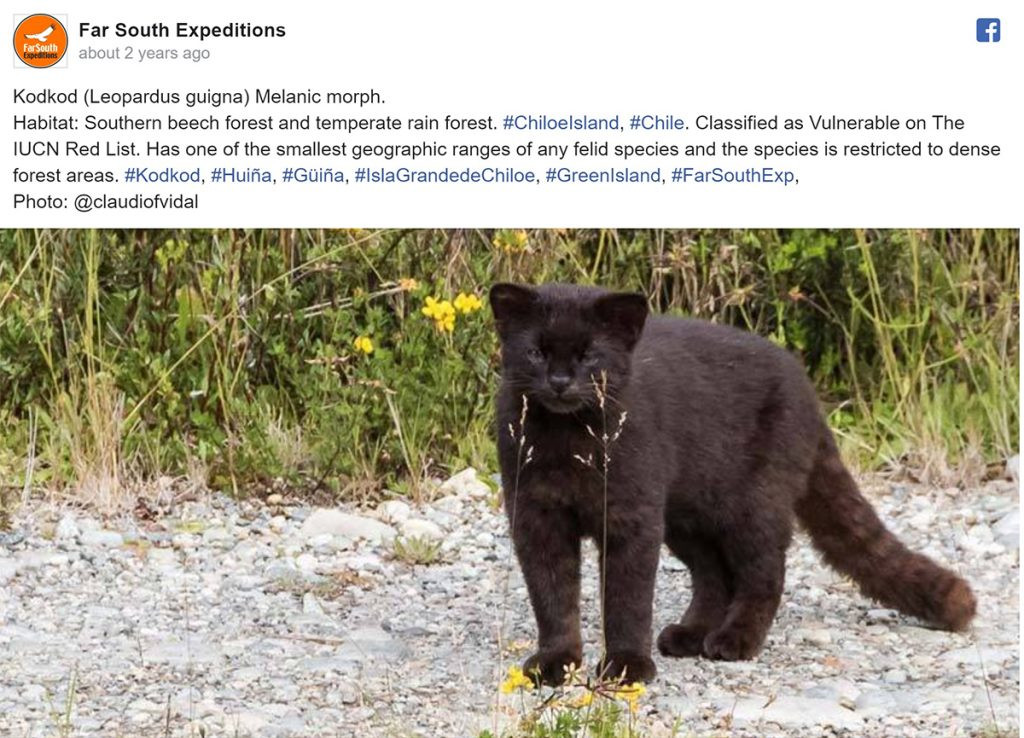 Guina or Kodkod in Chile. Alt text: Guina or Kodkod cat, Chiloe Island, Chile, smallest South American catGuina on Chiloe Island, Chile (Far South Expeditions)IUCN Status: Vulnerable
Guina or Kodkod in Chile. Alt text: Guina or Kodkod cat, Chiloe Island, Chile, smallest South American catGuina on Chiloe Island, Chile (Far South Expeditions)IUCN Status: Vulnerable
Also known as Kodkod, the guina is South America’s smallest wild cat, primarily found in south and central Chile, extending into Argentina. An agile climber, it primarily hunts on the ground, preying on small mammals, birds, lizards, and insects.
Guinas typically have brownish-yellow to grey-brown coats with dark spots, but melanistic (black) morphs are also common.
Parque Tepuhueico on Chiloe Island, Chile, is a good location to observe guinas, including melanistic individuals.
Geoffroy’s Cat (Leopardus geoffroyi): The Upright Scanner
Black Geoffroy’s cat in El Palmar National Park, Argentina (Image by The Wildlife Diaries)IUCN Status: Least Concern
Resembling a larger guina, Geoffroy’s cat has a wider distribution from Southern Bolivia to the Straits of Magellan. Uniquely, it stands upright, using its tail for balance to survey its surroundings.
Its preference for dense habitats makes Geoffroy’s cat difficult to spot. Like guinas, their coats are usually tawny with black spots, though black morphs are also frequent.
El Palmar National Park in Argentina is a good place to search for them. During a rainy visit to El Palmar, it took three nights to spot a single cat, a charming black morph.
Andean Cat (Leopardus jacobita): The High-Altitude Specialist
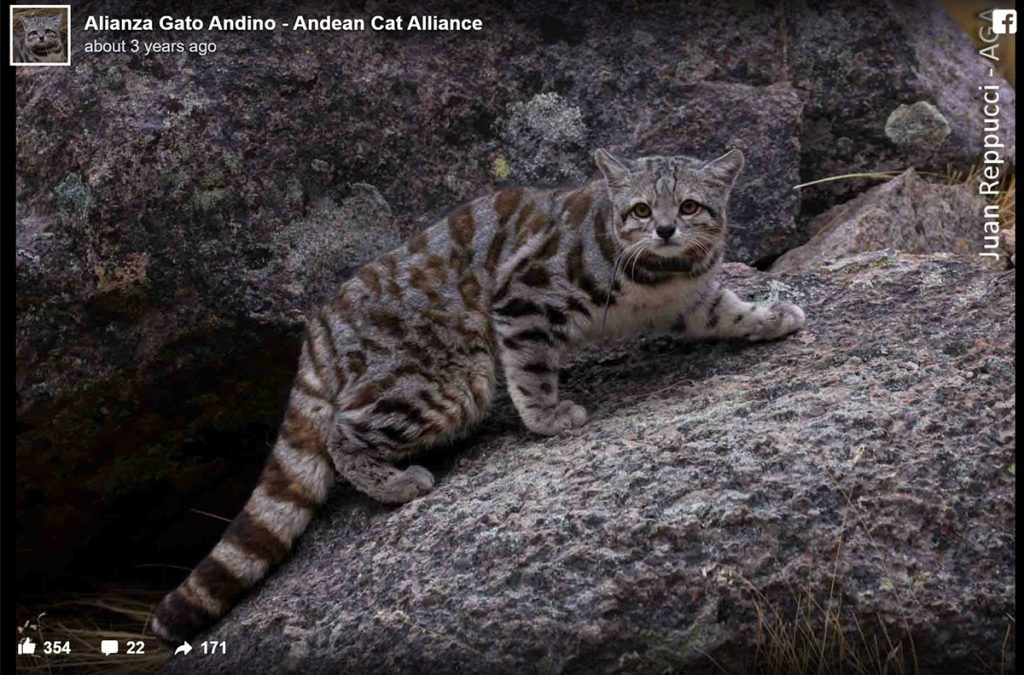 Andean Mountain Cat in Andes Mountains. Alt text: Andean Mountain Cat, high-altitude Andes, rare wild cat speciesAndean Mountain Cat (Juan Reppucci – Andean Cat Alliance)IUCN Status: Endangered
Andean Mountain Cat in Andes Mountains. Alt text: Andean Mountain Cat, high-altitude Andes, rare wild cat speciesAndean Mountain Cat (Juan Reppucci – Andean Cat Alliance)IUCN Status: Endangered
One of the world’s rarest cats, the endangered Andean cat, inhabits high elevations in the Andes Mountains across Southern Argentina, Chile, Bolivia, and Peru. Like its larger high-altitude relative, the snow leopard, the Andean mountain cat is rarely seen. It favors steep, arid, sparsely vegetated, rocky terrain for hunting mountain viscachas.
Lauca National Park and Salar de Surire National Monument in Chile are recommended locations for Andean cat searches.
Lynx Lineage: The Tufted-Eared Hunters
The Lynx lineage comprises four similar-looking species, all with short tails and distinctive tufted ears.
Canada Lynx (Lynx canadensis): The Snowshoe Cat
Canada lynx
IUCN Status: Least Concern
The northernmost lynx, the Canada lynx, ranges across Alaska, Canada, and the northern US. Its most notable feature is its massive, fur-covered paws, acting as snowshoes for traversing snowy landscapes without sinking.
Lake Superior in Minnesota is a suggested location for Canada lynx sightings.
Iberian Lynx (Lynx pardinus): A Conservation Success Story
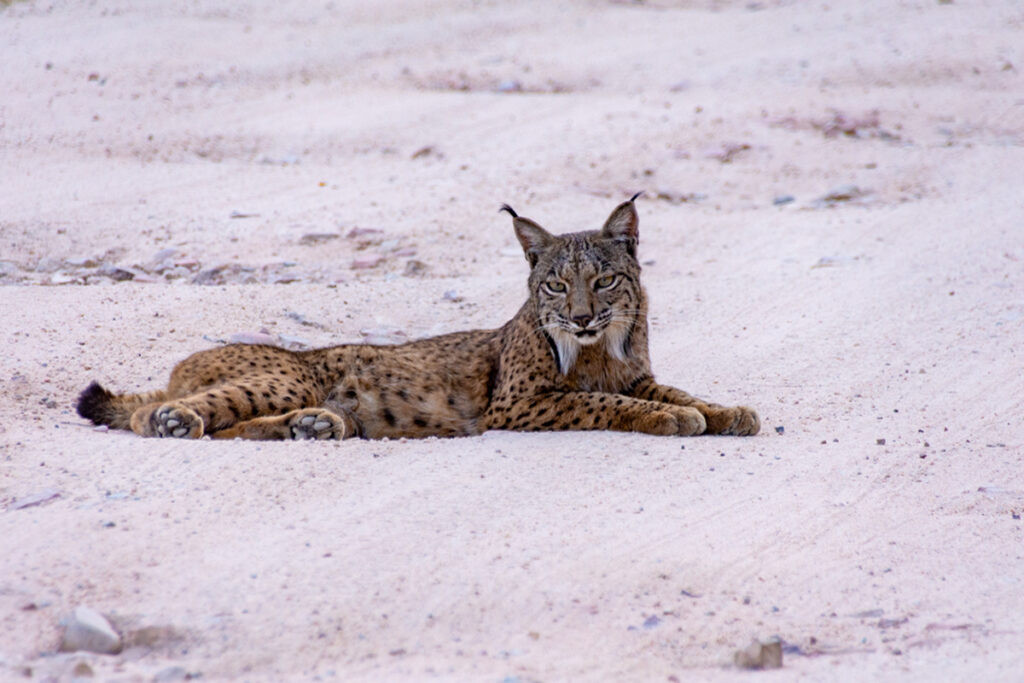 Iberian lynx Rafiki in Spain. Alt text: Iberian lynx Rafiki, Sierra de Andujar Natural Park, Spain, successful conservation storyIberian lynx named Rafiki in Sierra de Andujar Natural ParkIUCN Status: Vulnerable
Iberian lynx Rafiki in Spain. Alt text: Iberian lynx Rafiki, Sierra de Andujar Natural Park, Spain, successful conservation storyIberian lynx named Rafiki in Sierra de Andujar Natural ParkIUCN Status: Vulnerable
The Iberian lynx faced near-extinction. By 2002, fewer than 100 remained in isolated patches of Mediterranean scrubland in Spain. Urgent conservation action was almost too late.
Two decades of protection and intensive efforts have increased the Iberian lynx population in Spain and Portugal to over 2,000 in 2024. Sierra de Andujar Natural Park, near Cordoba, is the best place for sightings. Many tour agencies offer specialized Iberian Lynx tours.
During my PhD fieldwork in Sierra de Andujar in 2022, I observed a female lynx raising three cubs, witnessing her hunting, nursing, and interactions with her visiting older daughter. This level of intimate observation of secretive felids is unparalleled elsewhere.
Eurasian Lynx (Lynx lynx): The Widely Distributed Lynx
Eurasian lynx IUCN Status: Least Concern
The Eurasian lynx, the largest lynx species, has the widest distribution across Siberia, Asia, and Eastern Europe. While not threatened, it’s elusive in the wild.
Reliable Eurasian lynx sighting locations are lacking, but they are occasionally seen on Snow leopard trips in Hemis National Park, India.
Bobcat (Lynx rufus): The Common North American Lynx
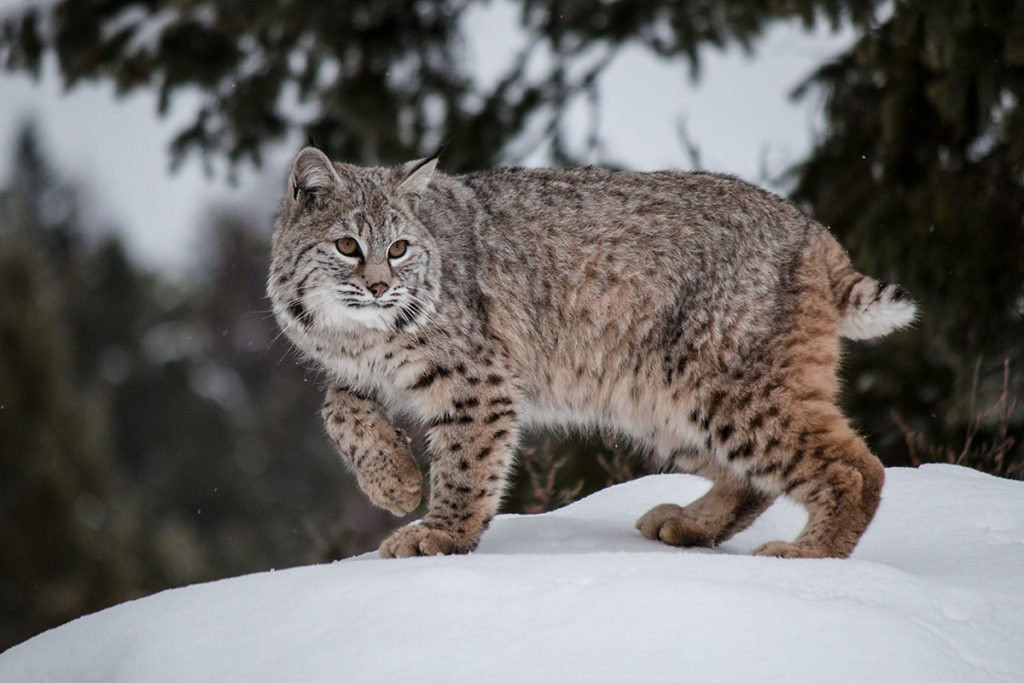 Bobcat with fluffy fur. Alt text: Bobcat portrait, Point Reyes, California, common North American wild catBobcat IUCN Status: Least Concern
Bobcat with fluffy fur. Alt text: Bobcat portrait, Point Reyes, California, common North American wild catBobcat IUCN Status: Least Concern
Resembling the Canada lynx, the bobcat ranges from southern Canada to central Mexico. Smaller than the Canada lynx, it’s about twice the size of a domestic cat. Its name comes from its short, “bobbed” tail. Bobcats primarily eat rabbits but also consume insects, chickens, birds, rodents, and even deer.
Bobcats are common, and Point Reyes National Seashore near San Francisco is a good sighting location.
Puma Lineage: An Unusual Feline Trio
The Puma lineage is unique, containing a typical small cat and two oversized small cats.
Puma (Puma concolor): The Mountain Lion
Puma in Corcovado National Park. Image by The Wildlife Diaries
IUCN Status: Least Concern
Despite its size, the puma (also called cougar or mountain lion) is classified as a small cat, not a big cat. Its range spans South America, Mexico, the US, and parts of southern Canada.
Torres del Paine National Park in Chile is a prime puma viewing location. I also saw a puma with two sub-adult cubs in Puma Valley, Corcovado National Park in Costa Rica.
Cheetah (Acinonyx jubatus): The Speed Champion
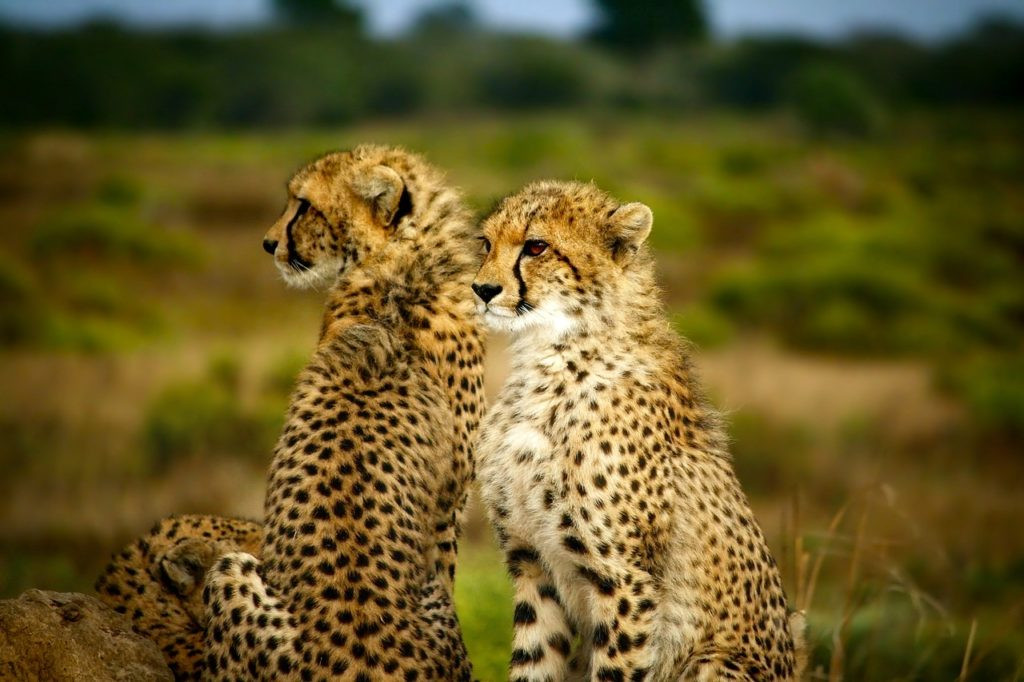 Two cheetahs in savanna. Alt text: Cheetahs in savanna, fastest land animal, African wildlife safariYoung cheetahs IUCN Status: Vulnerable
Two cheetahs in savanna. Alt text: Cheetahs in savanna, fastest land animal, African wildlife safariYoung cheetahs IUCN Status: Vulnerable
The cheetah is the fastest land animal, accelerating from 0 to 96 km/h in just three seconds. Agile at high speeds, cheetahs can make sharp turns while pursuing prey. Adapted to African heat, they only need to drink every four days.
Cheetahs inhabit Southern, North, and East Africa, with a small, critically endangered population in Iran (Asiatic or Persian cheetah, fewer than 50 individuals).
African cheetahs are relatively easy to spot on safari in Serengeti National Park (Tanzania), Maasai Mara (Kenya), Kgalagadi Transfrontier Park (South Africa), and Etosha National Park in Namibia. I observed a mother cheetah with a cub at a kill in Kruger National Park in South Africa.
Jaguarundi (Herpailurus yagouaroundi): The Otter-Like Cat
Jaguarundi grey and chestnut morphs IUCN Status: Least Concern
With short legs and a long body, the jaguarundi is an unusual-looking, unspotted cat, similar in color to pumas, its closest relative, but unlike other South American cats. It inhabits southern North America and South America.
While not threatened, jaguarundis are not easily spotted in the wild. Most sightings are accidental in South America, typically during daylight.
Leopard Cat or Prionailurus Lineage: Asian Small Cat Hub
The Leopard Cat lineage contains six small wild cats, all Asian in distribution.
Pallas’s Cat (Otocolobus manul): The Fluffy Steppe Dweller
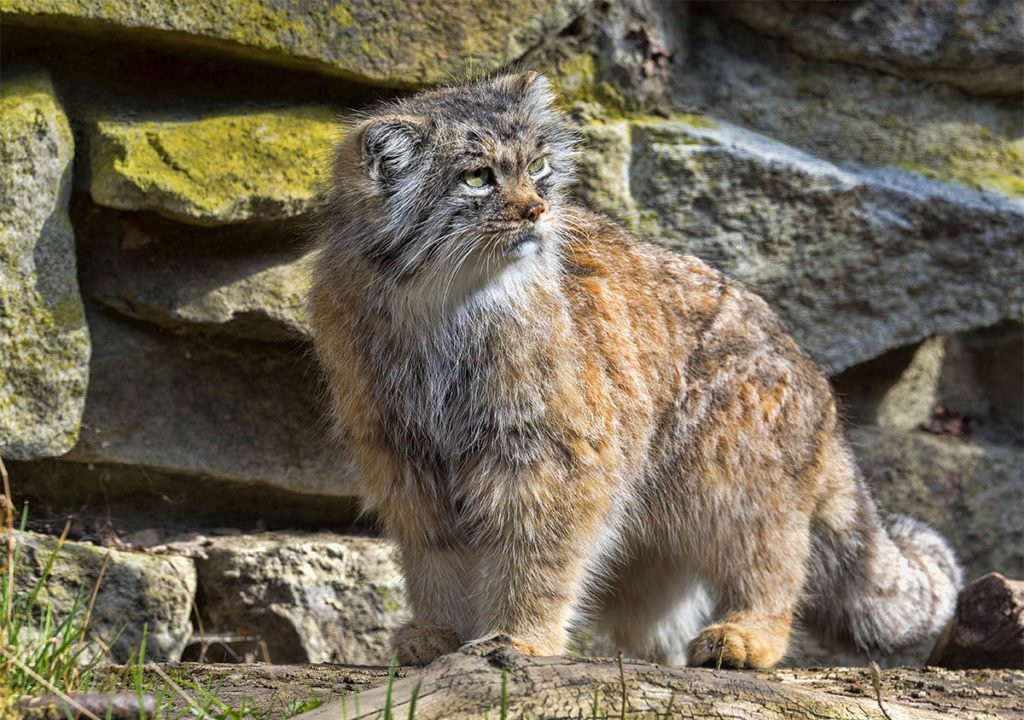 Pallas's cat with thick fur. Alt text: Pallas's cat, thick fur, Tibetan Plateau, cold-adapted wild catPallas’s cat IUCN Status: Near Threatened
Pallas's cat with thick fur. Alt text: Pallas's cat, thick fur, Tibetan Plateau, cold-adapted wild catPallas’s cat IUCN Status: Near Threatened
Also known as Manul, the Pallas’s cat has the densest and longest fur of any cat, adapted to the windswept, rocky slopes of Central Asia. Rocky habitats provide shelter in caves, crevices, or marmot burrows. Pallas’s cats primarily prey on pikas and voles, occasionally taking birds.
Pallas’s cats are not fast runners, relying on camouflage to remain undetected. When disturbed, they often freeze, becoming virtually invisible against rocky terrain.
The Ruoergai grassland on the Tibetan Plateau in China’s Sichuan province is a prime Pallas’s cat location. I saw at least three individuals in five days there.
Rusty-Spotted Cat (Prionailurus rubiginosus): The World’s Tiniest Feline
Rusty-spotted cat IUCN Status: Near Threatened
The rusty-spotted cat, the smallest wild cat, is native to Indian and Sri Lankan deciduous forests, weighing up to 1.6 kg and 48 cm long. Despite its size, it’s bold, equally comfortable in trees and on the ground, catching prey (mostly rodents and small birds) with rapid movements.
Sri Lanka’s Wilpattu National Park is excellent for rusty-spotted cat sightings. We saw a relaxed individual at night on the Wilpattu Sanctuary road.
Flat-Headed Cat (Prionailurus planiceps): The Aquatic Hunter
Flat-headed cat in Khao Kheow Zoo, Thailand (Image by The Wildlife Diaries)IUCN Status: Endangered
The endangered flat-headed cat inhabits the Thai-Malay Peninsula and Borneo and Sumatra islands. This semi-aquatic feline lives along riverbanks, hunting aquatic vertebrates. An excellent swimmer, it has adaptations for aquatic hunting: non-retractible claws for grip on slippery banks, semi-webbed feet for wading, and long, sharp canines for grasping slippery prey.
Threatened by riverine forest habitat destruction for oil palm plantations, settlements, and agriculture, the lower Kinabatangan River in Borneo, near Sukau village, is the most reliable sighting location. I saw a single individual after four nights of searching.
Fishing Cat (Prionailurus viverrinus): The Water-Loving Feline
Fishing cat in Sri Lanka. Image by The Wildlife DiariesIUCN Status: Endangered
Unusually for cats, fishing cats are not only unafraid of water but depend on it for food, similar to flat-headed cats. Both hunt fish and small aquatic vertebrates.
Fishing cats have a wider range across South and Southeast Asia. Sri Lanka, around Sigiriya and Wilpattu National Park outskirts, is the best place to find them. We saw cats in both locations, but Sigiriya sightings were distant, while a cat near Wilpattu was curled up by a farm road.
Mainland Leopard Cat (Prionailurus bengalensis): The Widespread Asian Cat
IUCN Status: Least Concern
The most widespread Asian small cat, the leopard cat, ranges across South, Southeast, and East Asia. Tolerant of human disturbance, it’s often found in rural areas and even oil palm plantations.
Sunda Leopard Cat (Prionailurus javanensis): The Island Leopard Cat
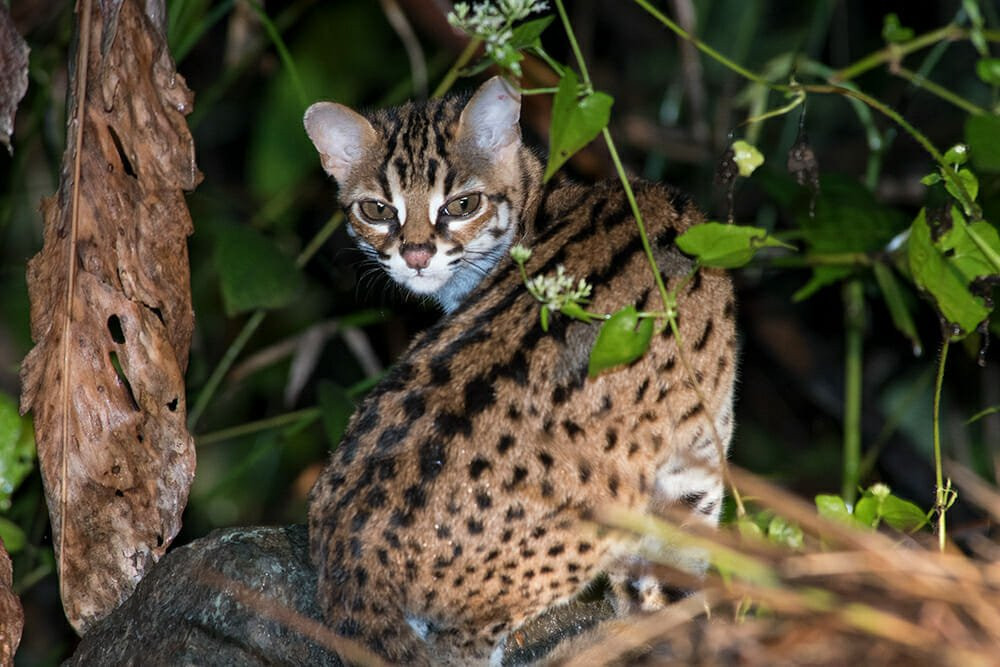 Sunda leopard cat in Borneo forest. Alt text: Sunda leopard cat, Deramakot Forest Reserve, Borneo, island subspeciesSunda leopard cat in Deramakot, Borneo (Image by The Wildlife Diaries)
Sunda leopard cat in Borneo forest. Alt text: Sunda leopard cat, Deramakot Forest Reserve, Borneo, island subspeciesSunda leopard cat in Deramakot, Borneo (Image by The Wildlife Diaries)
In 2017, the Sunda leopard cat, found on Borneo and Sumatra, was separated from the mainland leopard cat based on genetic analysis. Common in Borneo, I’ve seen them in Danum Valley and Deramakot Forest Reserve.
Felis Lineage: The Youngest Branch of Wild Cats
The Felis lineage, the youngest, includes six closely related small wild cats distributed across Africa and Eurasia.
Jungle Cat (Felis chaus): The Diurnal Hunter
Jungle cat IUCN Status: Least Concern
The jungle cat, or swamp cat, is a medium-sized cat found from the Middle East to South and Southeast Asia and southern China. Jungle cats are typically diurnal, hunting throughout the day.
I saw jungle cats during the day in Kanha Tiger Reserve in India and at night near Sigiriya in Sri Lanka. Sightings were not close or ideal for photography.
Black-Footed Cat (Felis nigripes): Africa’s Smallest Hunter
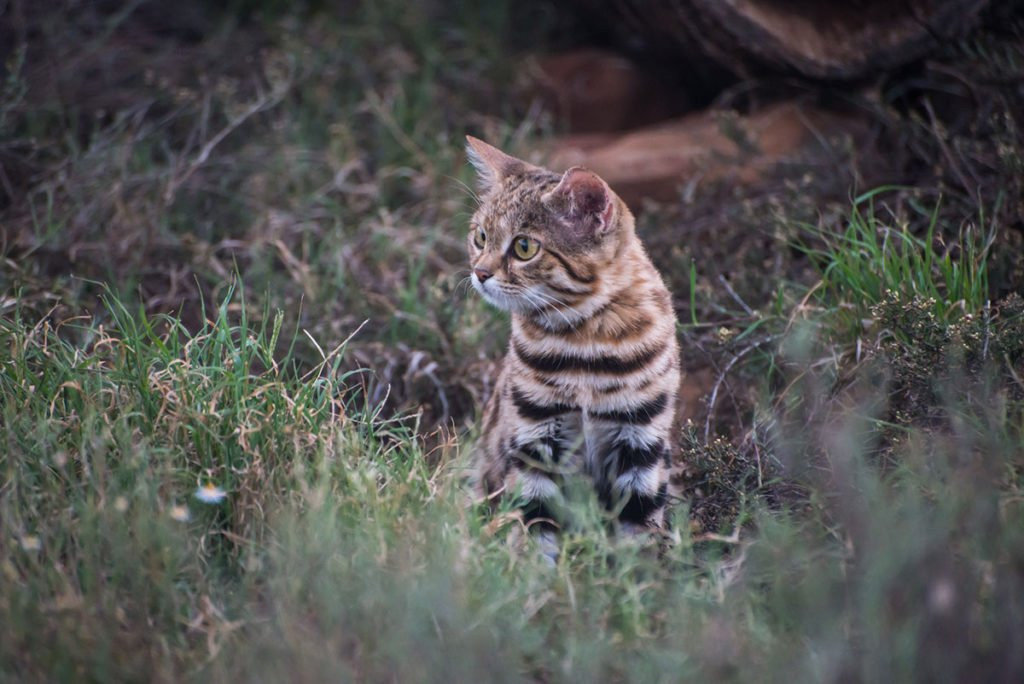 Black-footed cat portrait. Alt text: Black-footed cat, Marrick Farm, South Africa, smallest African wild catBlack-footed cat IUCN Status: Vulnerable
Black-footed cat portrait. Alt text: Black-footed cat, Marrick Farm, South Africa, smallest African wild catBlack-footed cat IUCN Status: Vulnerable
Africa’s smallest wild cat, the black-footed cat, is the second smallest wild cat after the rusty-spotted cat. An excellent hunter with a huge appetite, it can consume up to 3,000 rodents yearly. Nicknamed “anthill tiger,” it lives in termite mounds and hunts rodents in surrounding savannahs.
Black-footed cats have a limited range in southern Southern Africa. Marrick Farm Safari in South Africa is the best place to see them.
Sand Cat (Felis margarita): The Desert Specialist
Sand cat
IUCN Status: Least Concern
The sand cat, a true desert dweller, inhabits North African, Middle Eastern, and Central Asian deserts. While not threatened, it’s not easily seen in the wild.
Sand cats have incredibly dense fur protecting them from desert night chills. Thick black fur on paw soles protects against scorching sand.
Most sand cat sightings are from Western Sahara and Jebil National Park in Southern Tunisia.
Chinese Mountain Cat (Felis bieti): The Tibetan Plateau Ghost
 Chinese Mountain Cat disappearing into darkness. Alt text: Chinese Mountain Cat, Tibetan Plateau, rare and elusive wild catChinese Mountain Cat disappearing into the darkness on the Tibetan Plateau (The Wildlife Diaries)IUCN Status: Vulnerable
Chinese Mountain Cat disappearing into darkness. Alt text: Chinese Mountain Cat, Tibetan Plateau, rare and elusive wild catChinese Mountain Cat disappearing into the darkness on the Tibetan Plateau (The Wildlife Diaries)IUCN Status: Vulnerable
One of the least known and rarest wild cats, the Chinese mountain cat, was not photographed in the wild until about a decade ago. It has a limited distribution in Western China.
I saw the Chinese Mountain cat on the Ruoergai grassland on the Tibetan Plateau. In four nights, I saw cats on three occasions, making it a good spot.
African and Asiatic Wildcat (Felis lybica): The Ancestor of Domestic Cats
African wildcat Recent taxonomy splits wildcats into African and Asiatic wildcats and European wildcats. I saw the African wildcat at Kapama Reserve, near Kruger National Park in South Africa. Kafue National Park in Zambia is also a suggested wildcat location.
European Wildcat (Felis silvestris): The Forest Phantom of Europe
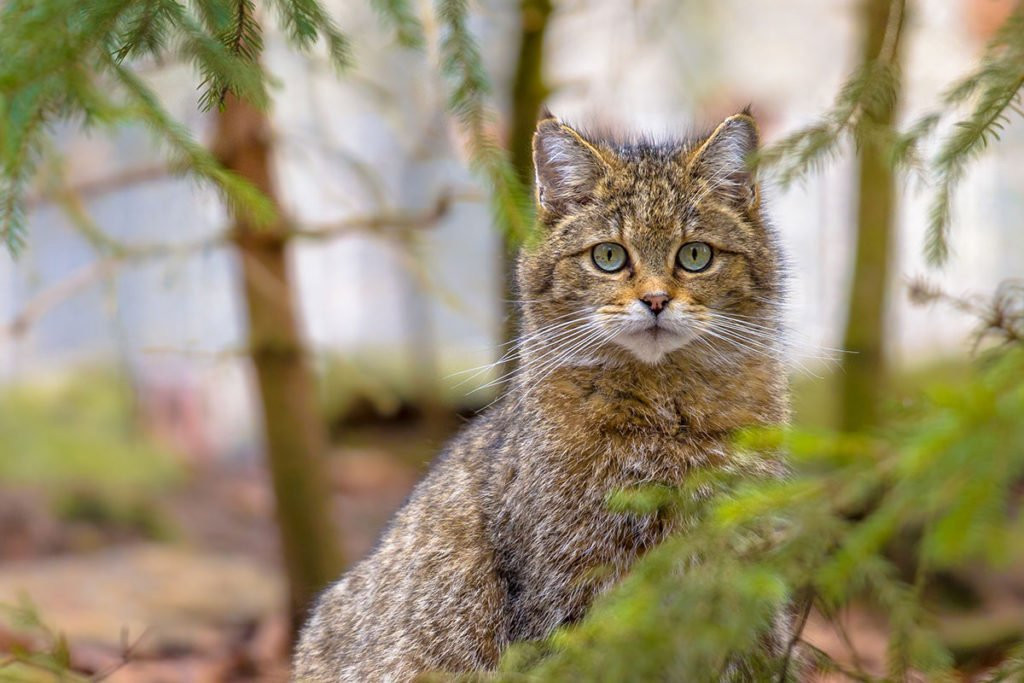 European wildcat in forest. Alt text: European wildcat, forest habitat, European continent wild catEuropean wildcat IUCN Status: Least Concern
European wildcat in forest. Alt text: European wildcat, forest habitat, European continent wild catEuropean wildcat IUCN Status: Least Concern
The European wildcat has a patchy distribution in Western, Southern, Central, and Eastern European forests, extending to the Caucasus Mountains. Cordillera Cantabrica in northern Spain, around Boca de Huergano, is a good place to look.
The Scottish wildcat is a well-known European wildcat subspecies.
The Threat to Wild Cats: A Conservation Crisis
Wild cats face numerous human-caused threats, including habitat loss and fragmentation, prey depletion, and persecution due to perceived threats to human livelihoods. Consequently, 25 wild cat species are currently threatened with extinction.
Five species are Endangered on the IUCN Red List: tiger, Borneo bay cat, Andean cat, fishing cat, and flat-headed cat.
Thirteen more are Vulnerable: lion, leopard, snow leopard, clouded leopard, Sunda clouded leopard, African golden cat, northern oncilla, southern oncilla, guina, cheetah, fishing cat, black-footed cat, Chinese mountain cat, and Iberian lynx (downgraded from Endangered in 2024).
Seven species are Near Threatened: jaguar, Asiatic golden cat, marbled cat, margay, colocolo, Pallas’s cat, and rusty-spotted cat.
Which Wild Cat is the Rarest? Unveiling the Most Elusive Felids
Determining the absolute rarest wild cat is challenging due to limited data on some of the most elusive species. The Amur leopard, with fewer than 90 individuals in the Russian Far East, is undoubtedly among the rarest.
The Iranian cheetah population might be even smaller, but data is scarce due to fieldwork challenges in a politically unstable region.
The South China tiger may be functionally extinct, with no confirmed wild sightings since the late 1980s.
Have you encountered wild cats during your travels? Share your experiences in the comments below!
Further Exploration into the World of Wild Cats
2694 shares

